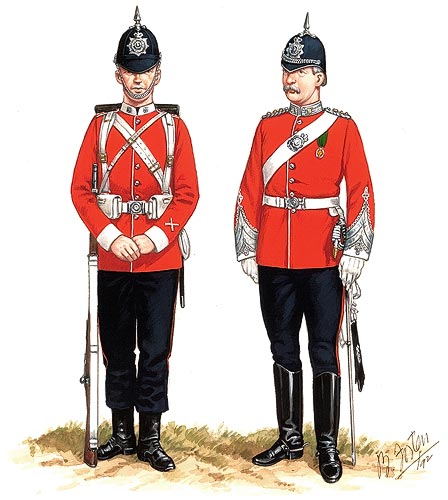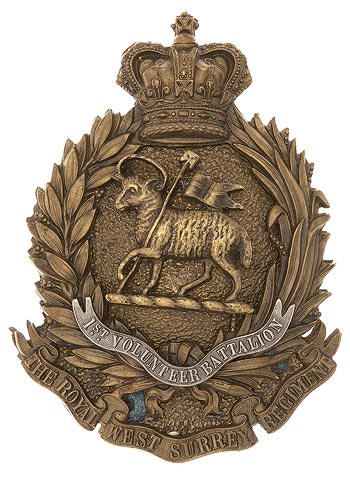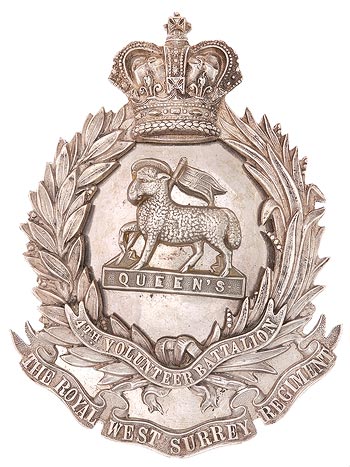The Queen's Royal Surrey Regiment
Militia, Volunteers and Territorials
Formation and War
 |
| Private, Marching order c1899 and Field Officer, Review order 1896. (Click to enlarge) |
Under the 1907 Act the Volunteers and Yeomanry became the Territorial Force while the Militia was transferred to the Special Reserve. The Yeomanry retained their titles, roles and, definitely, their horses. (As late as 1940 in the Second World War the Warwickshire and Staffordshire Yeomanry Regiments were on mounted service in Syria).
Organisation and training of the new Force was based on local Associations, but strong links with the Regular Army were established and strengthened. Regular generals commanded the fourteen Territorial Force infantry divisions and regular officers commanded nearly all of the infantry brigades and the fourteen cavalry brigades. The Territorial divisions had appropriate supporting arms including artillery, engineers and ordnance. Although officially only formed for Home Defence, it did not need much imagination to assume that in any future war volunteers for overseas service would be forthcoming as in the earlier South African conflict. Financial remuneration for the troops had improved by this time, the payment being one shilling and two pence a day plus messing allowance of one shilling (5p) per day plus free rations. Horse allowance was £5 per day.
The “Imperial” was dropped from the Yeomanry title in 1908 and in the same year the award of the Territorial Decoration replaced the former Volunteer Decoration for officers. A similarly appropriate Territorial Efficiency Medal was instituted for other ranks.
| 1st Volunteer Battalion The Royal West Surrey Regiment. (Click to enlarge) |
4th Volunteer Battalion The Royal West Surrey Regiment. (Click to enlarge) |
Related


